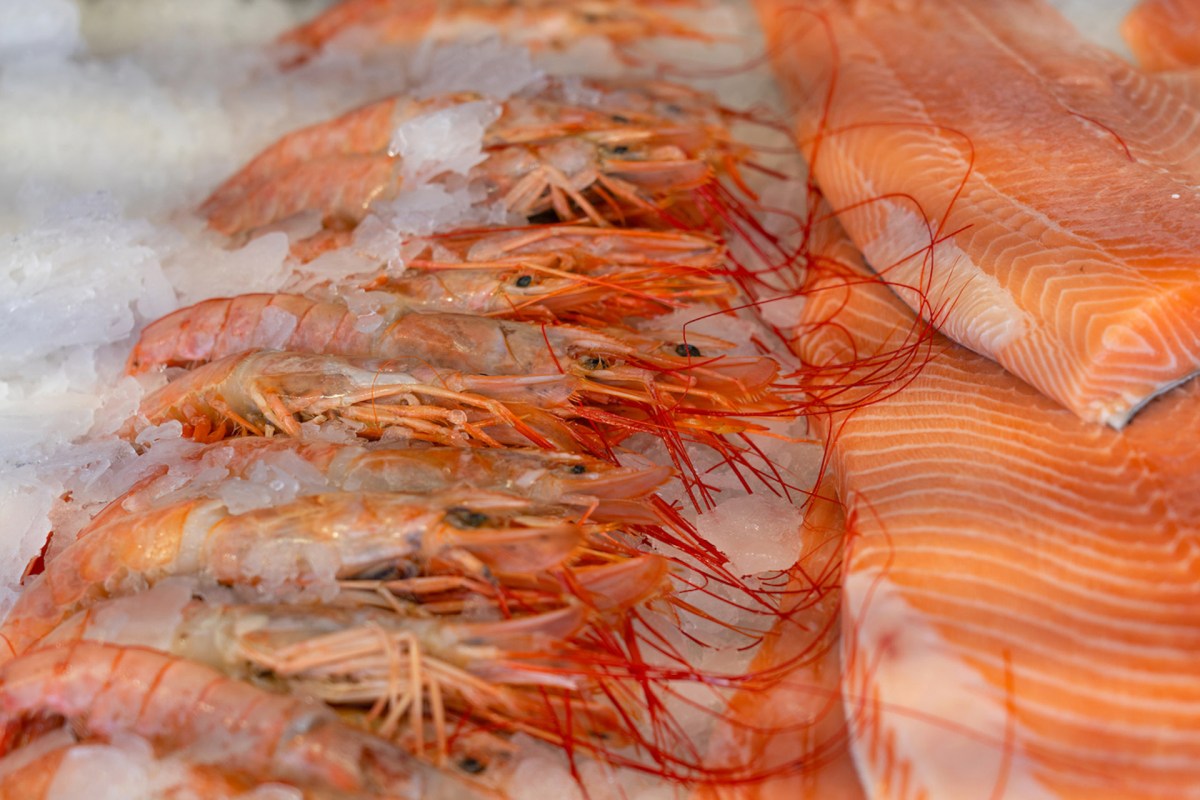I love to eat shrimp as much as the next person — and I'm not alone: It's the most popular seafood in the United States. When it comes to sustainability, though, shrimp is complicated.
A recent investigation of India's farmed shrimp industry, which according to the report supplies 40% of the shrimp we eat in the U.S., found rampant environmental abuse, from polluted water and farmland to ravaged mangroves.
Unfortunately, it's not the only seafood with a rap sheet: Farmed salmon has its own issues, while half of the tuna caught worldwide is unsustainable, according to the Monterey Bay Aquarium. With over 80% of the world's fisheries depleted or declining, per The World Counts, and demand for seafood on the rise, something's gotta give.
🌱A plant-based solution?
Could plant-based seafood — or "alternative seafood" — fill the gap? To entrepreneurs such as Aki Kaltenbach, who is vegan, the demand is clear.
"I was looking for seafood alternatives, and I couldn't find any. So, I developed my own," she told The Cool Down.
She launched Save da Sea, which makes plant-based smoked salmon and tuna salad, in 2019.
"This is at a time when you were seeing the rise of plant-based meat," she explained. "To me, it seemed obvious."
Investors agree: The category had garnered over $300 million in funding as of 2021.
At Expo West, the annual natural food trade show, I clocked numerous plant-based seafood products tackling tuna, salmon, and shrimp — three seafood varieties poised for disruption. I sampled each to see how they stack up in taste, texture, and similarity to the original.
🍣 A change of tune-a
Konscious Foods aims to create "wow-worthy sustainable seafood made from plants," including sushi rolls, poke bowls, and onigiri. The company's tuna and salmon, made with the root vegetable konjac plus pea fiber, were the only products I sampled that emulated real raw filets.
Their tuna avocado roll looks great, and the taste — the tuna-ness — is good, if a bit understated. Ironically, it's undercut by the rice, which has the compacted texture of chilled pre-made sushi.
🗣️ Why do you eat plant-based foods?
🔘 The health benefits 🥗
🔘 It's cheaper 💰
🔘 It's good for the planet 🌎
🔘 I prefer the taste 😋
🗳️ Click your choice to see results and speak your mind
That's because it's from the frozen aisle. I had the same reaction to Konscious's salmon poke bowl. The product's resemblance to fish is uncanny, with a taste and texture close to real salmon, down to the unctuous gleam of the original. Again, though, the rice holds it back.
I'd sooner eat fresh poke because, like with sushi, the rice is best in the moments after it's made. Konscious likely knows this, because it sells blocks of its tuna and salmon — complete with the white striations of a real filet — through its business-to-business food service range for fresh preparation.
Konscious Plant-Based Tuna Avocado Roll (Scale of 1 to 5, 5 being best)
Taste: 3/5 🐟🐟🐟
Texture: 2/5 🐟🐟
Similarity: 5/5 🐟🐟🐟🐟🐟
Konscious Plant-Based Salmon Poke Bowl
Taste: 3/5 🐟🐟🐟
Texture: 4/5 🐟🐟🐟🐟
Similarity: 5/5 🐟🐟🐟🐟🐟
🥫A canny alternative
I tasted three canned tuna products from unMeat, Good Food Choice, and Save da Sea. While the first two, made with soy and pea plant proteins, are textural cousins of the real thing, Save da Sea's jackfruit-based tuna stood out.
"You eat with your eyes, right?" Kaltenbach explained. "So it needs to be beautiful, and look like the product that you're emulating."
Not only a visual ringer, Save da Sea's tuna salad tastes and feels just like canned tuna. UnMeat's shelf-stable tuna isn't bad, either, with a briny chew true to the original.
Save da Sea also makes the only smoked salmon I sampled, though Konscious sells a konjac-based version I didn't try. Save da Sea's take on lox, made with carrots, is delicious, and evokes the smokiness of its namesake, without tasting or smelling overly fishy.
Save da Sea Plant-Based Tuna Salad
Taste: 5/5 🐟🐟🐟🐟🐟
Texture: 5/5 🐟🐟🐟🐟🐟
Similarity: 5/5 🐟🐟🐟🐟🐟
unMeat Fish-Free Tuna-Style Flakes
Taste: 4/5 🐟🐟🐟🐟
Texture: 3/5 🐟🐟🐟
Similarity: 4/5 🐟🐟🐟🐟
Good Food Choice Vegy Tuna Salad
Taste: 2/5 🐟🐟
Texture: 2/5 🐟🐟
Similarity: 1/5 🐟
Save da Sea Plant-Based Smoked Salmon
Taste: 5/5 🐟🐟🐟🐟🐟
Texture: 4/5 🐟🐟🐟🐟
Similarity: 5/5 🐟🐟🐟🐟🐟
🦐 So long to shrimp
Beleaf's Plant-Based Shrimp, the only shrimp alternative I found at Expo West, is made from just seven ingredients, including konjac powder. While it's the spitting image of peeled cooked shrimp, its texture is too firm and its flavor too bland to sustain the illusion.
I tried it both heated, with cocktail sauce, and breaded and fried. Neither captures the essence of shrimp, though the fried version musters a more convincing texture. Nonetheless, at a cost close to $1 per shrimp, it's hard to imagine its appeal beyond strictly plant-based eaters.
Beleaf Plant-Based Shrimp
Taste: 2/5 🐟🐟
Texture: 2/5 🐟🐟
Similarity: 5/5 🐟🐟🐟🐟🐟
🌊A new wave
Despite mixed results, it's encouraging to see so much innovation. While I sampled only plant-based products, investors are also backing fermented and cultivated products, though it appears none were on the market as of 2022.
Many plant-based products lack the nutrients found in seafood, though this could improve with time and experimentation. I don't typically eat smoked salmon, but I'd buy Save da Sea's version. If the company can convert one buyer, others can't be far behind.
Join our free newsletter for easy tips to save more, waste less, and help yourself while helping the planet.








